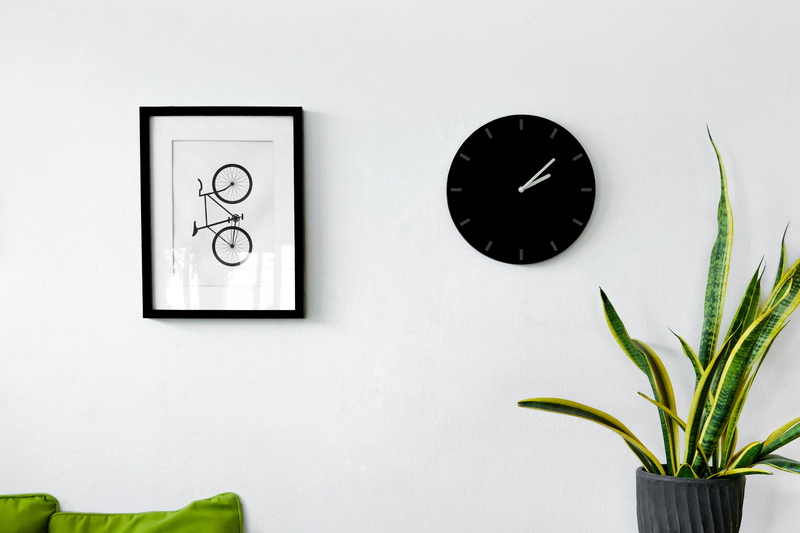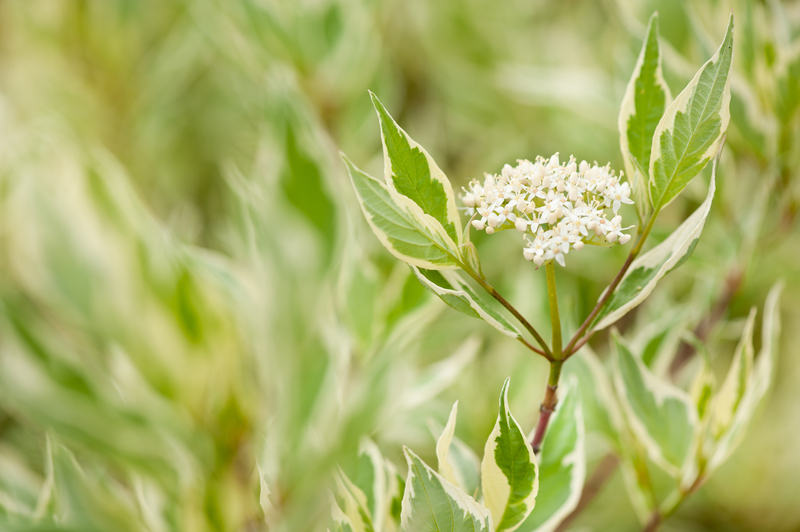Create a Garden Sanctuary for Pooches and Plants
Posted on 24/09/2025
Create a Garden Sanctuary for Pooches and Plants: The Ultimate Guide
Are you passionate about your furry friend and dedicated to your garden's beauty? Creating a garden sanctuary for pooches and plants is a rewarding challenge, blending functionality, safety, and aesthetics in a harmonious outdoor haven. In this comprehensive guide, we explore how to design a dog-friendly garden that's as kind to your pets as it is lush and bountiful for your favorite plants.
Why Build a Dog- and Plant-Friendly Garden?
A dog and plant sanctuary provides numerous benefits for both your canine companion and your landscaping. With growing concerns over pet safety and gardening sustainability, many homeowners are seeking smart ways to have a backyard that accommodates both. A well-designed space allows:
- Safe outdoor enrichment for your dogs
- Protection of delicate flora from energetic paws
- Aesthetically pleasing usability-everyone enjoys the garden!
- Encouragement of natural behaviors like digging or sniffing--in designated areas
- Peace of mind for owners, knowing plants and dogs are safe

Planning Your Garden Sanctuary: Key Considerations
Assess Your Space and Dog Breed
Every pooch has distinct needs. Start by asking: Is your dog large and boisterous, or small and reserved? Some breeds are prone to digging, others love to run, and a few prefer shade and quiet. Map your space considering:
- Yard size and sunlight exposure
- Existing plantings and structures
- Natural canine behaviors and breed-specific needs
Set Goals for Your Backyard Sanctuary
Before planting or fencing, define your goals:
- Which areas do you wish to keep pet-free?
- Where is the best spot for play, rest, and exploration?
- What plants are safe for dogs--which are off-limits?
Being clear upfront ensures your final dog-friendly garden is both functionally and visually delightful.
Dog-Friendly Landscaping Features
Fencing Solutions for Safety
A safe boundary is essential for any garden sanctuary for pooches and plants. Fencing should keep your pet contained and prevent unwanted wildlife intrusion, while still being attractive. Consider:
- Solid wooden or composite fences--high enough to prevent jumping
- Transparent or wire fencing for a view without escape risks
- Filtering hedges or shrubs as natural borders (be sure they're non-toxic!)
- Dig-proof solutions: install an L-shaped footer or chicken wire below the fence line
Tip: Avoid fences with sharp edges or potential snag points.
Paths and Play Zones
Dogs naturally follow paths around gardens. Defined walkways preserve your plant beds and encourage canine exploration. Use:
- Sturdy, non-slip materials like flagstones, bricks, or decomposed granite
- Pea gravel or compacted bark mulch--gentle on paws
- Wide, winding paths to direct curiosity and provide workout laps
Integrate designated play zones with fetch-friendly open spaces or sandpits for digging. These areas satisfy your dog's instincts and protect delicate plantings.
Shady Retreats and Water Features
Dogs need shade and cool places, especially in summer. Create comfort with:
- Arbors, pergolas, or large umbrellas
- Strategically placed trees or tall, safe shrubs
- Dog-friendly ground covers in shaded lounging spots
Consider a shallow water feature: a pet fountain, small pond (with gentle slopes to prevent accidents), or a wading pool. Fresh water keeps pups hydrated and playful.
Pet-Safe Plant Selection
The heart of a plant and dog-friendly sanctuary garden is choosing greenery that's non-toxic to pets and resilient to the wear and tear of play.
Non-Toxic, Hardy Plants for Dogs
Popular dog-safe choices include:
- Camellias
- Roses (watch for thorns with pups prone to chewing)
- Sunflowers
- Magnolias
- Snapdragons
- Marigolds
- Basil, thyme, sage, and other herbs
- Ornamental grasses like Pennisetum and Feather Reed Grass
- Hens and chicks (Sempervivum succulents)
For more comprehensive lists, consult your local extension service or the ASPCA's poison control website.
Plants to Avoid in a Dog Sanctuary Garden
- Oleander
- Certain lilies
- Azalea and rhododendron
- Sago palm
- Foxglove
- Hydrangea
- Mistletoe, daffodils, and other bulbs
Many common garden favorites are toxic or potentially fatal. _Always double-check_ plant toxicity before buying new species for your garden!
Resilient and Repairable Garden Beds
Accept that some wear-and-tear is inevitable in your landscaping with dogs. Group delicate flowers in raised beds or behind low borders. Use tough ground covers such as:
- Creeping thyme (Thymus serpyllum)
- Clover
- Dwarf mondo grass
- Tall fescue grass--tolerates paw traffic and urine better than standard lawns
_Mulch beds_ with wood chips, shredded leaves, or cocoa-free mulch--never use cocoa mulch, as it's harmful to dogs!
Eco-Friendly Maintenance, Safe for Pets and Plants
Natural Pest and Weed Control
Say goodbye to harsh chemicals. Use organic methods that are kind to both pets and pets:
- Beneficial nematodes or ladybugs for pest management
- Manual weed removal or natural mulches to smother unwanted growth
- DIY sprays (e.g., diluted vinegar for weeds--avoid spraying directly on plants you want to keep)
Avoid slug pellets, rodenticides, and synthetic pesticides--these are often fatal to dogs and local wildlife.
Organic Lawn Care Tips
- Water lawns early in the day to reduce fungal risks and muddy play times
- Compost yard waste (out of reach from nosy pooches--for safety!)
- Limit fertilizers--choose pet-safe, organically certified formulas
- Repair high-traffic spots promptly with quick-growing seed mixes
_Tip: Rinse grass after potty breaks to dilute urine and prevent burn spots._
Enrichment Ideas: Keeping Canine Minds and Bodies Happy
Interactive Garden Elements
- Obstacle courses: Tunnels, weave poles, or mini-jumps for training and exercise
- Sniffing gardens: Plant aromatic herbs and flowers in small clusters for scent exploration
- Sandboxes or digging pits to channel excavating instincts harmlessly
Garden Games and Training Spots
- Designate areas for agility routines or fetch
- Set up shaded, comfortable spots for obedience practice
- Install a small, secure fence for puppy training or quiet rest
**Integrate enrichment into your daily routine--walk laps, hide treats, or teach scent games!**
Simple DIY Garden Projects for Pooch and Plant Paradise
- Pallet dog bed: Upcycle wooden pallets into a stylish, shaded outdoor dog lounger
- Water bowl stations: Sink a ceramic basin into the ground for steady access to fresh water
- Cedar plank pathways--easy to install and great on sensitive paws
- Raised planter boxes: Grow delicate or specialty plants above dog height
- Doggy viewing windows in fences, so pets can safely watch the world pass by
Real-Life Garden Sanctuary Inspiration: Case Studies
Urban Yard Made Pet-Safe
An urban dog owner in Austin, TX, fenced their backyard with cedar, used Mondo grass instead of a traditional lawn, and installed a raised herb garden behind decorative iron fencing. Their pup enjoys a shaded corner with a doggy splash pad and mulch paths that circle plant beds--combining ease of care with beauty.
Cottage-Style Refuge with Large Dog
A family in Oregon with an energetic labrador used pea gravel, hardy native perennials, and a sandbox. Dividing the yard into zones with espaliered fruit trees protected their flowers and doubled as fun fetch lines, proving you don't need to sacrifice style for function.
Seasonal Tips for Dog-and-Plant Sanctuary Success
- Spring: Inspect for winter fence damage, replenish mulch, check for toxic spring bulbs emerging
- Summer: Set up shade, provide ample water, avoid fertilizer burn risks
- Autumn: Remove fallen leaves (many are hazardous if munched), plant new herbs while temperatures are mild
- Winter: Cover sensitive plants, monitor fence lines, and keep dog paw cleaning supplies handy for muddy days

Common Pitfalls and How to Avoid Them
- Planting without checking toxicity: Always research!
- Using cocoa mulch: Delicious, but deadly to dogs
- Neglecting shade or water: Leads to overheating and unhappy pups
- Ignoring digging instincts: Provide an outlet or risk uprooted beds
Conclusion: Enjoying Your Pooch-Friendly Garden Sanctuary
Building a garden sanctuary for pooches and plants is both an art and a science. With planning, safe plantings, creative design, and mindful maintenance, you can cultivate an outdoor retreat that delights dogs and gardeners alike. Invest in boundaries, choose hardy and safe flora, and create opportunities for play and relaxation. Your whole household--canine and human--will appreciate the tranquility, enrichment, and beauty you've grown together.
Transform your outdoor space today, and let your love for pooches and plants bloom in perfect harmony!

